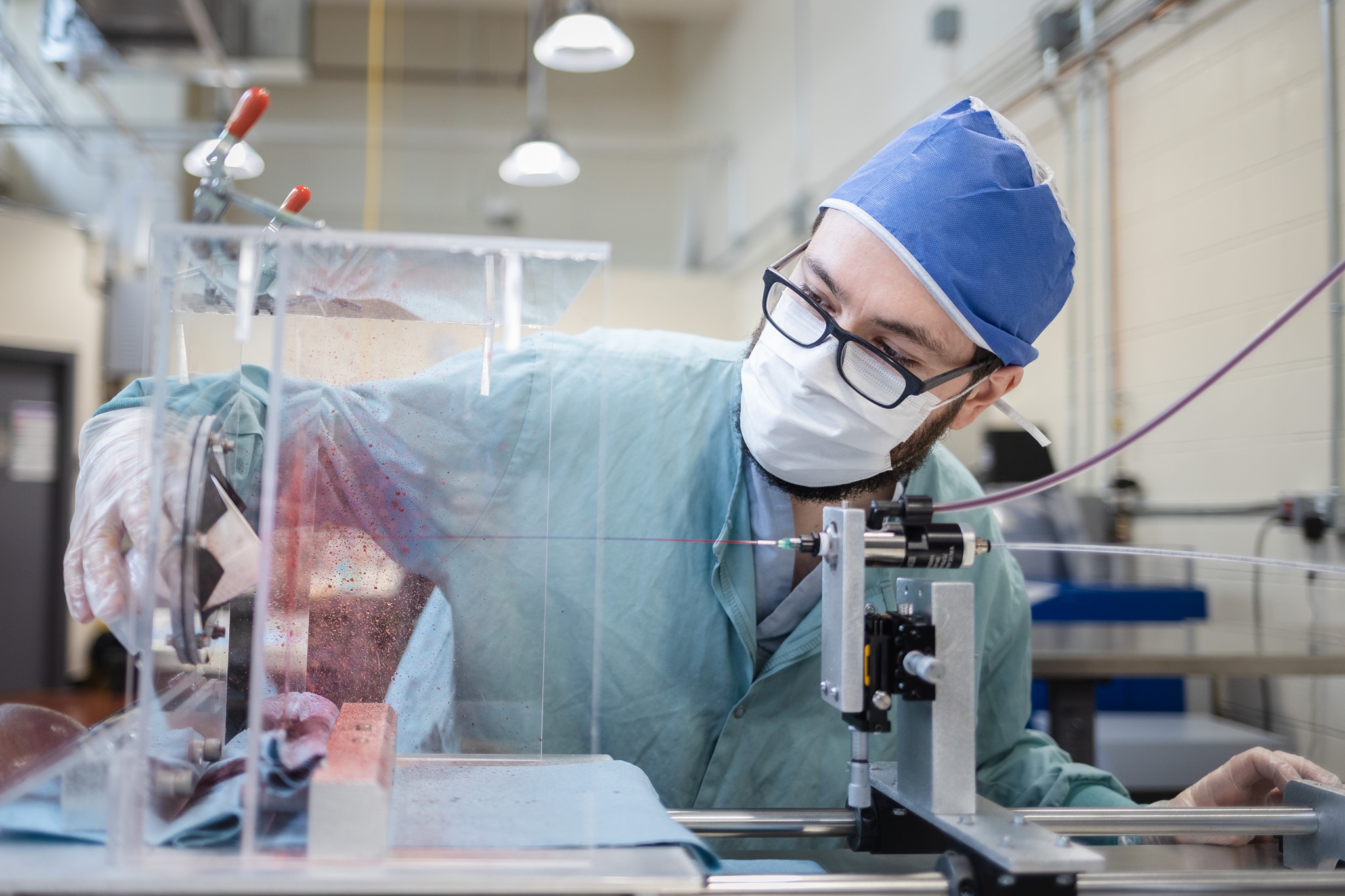BC-based accredited PPE testing lab
Western Canada’s first accredited personal protective equipment (PPE) lab, specializing in testing and validating PPE, is a pandemic-driven innovation from Vancouver Coastal Health (VCH), with support from the Ministry of Health and the Provincial Health Services Authority (PHSA). VCH recognized the need for a local lab that could quickly test and validate the effectiveness of PPE to provide assurance to health care workers and patients in the province.
Located on the Vancouver General Hospital campus, the lab was completed in June 2020 and accredited in October 2020. The lab’s initial mandate was to ensure the safety of health care workers and patients by providing testing for priority pieces of PPE, such as N95 respirators. The scope of the lab has since expanded, and the lab now offers seven tests, including tests for gowns (such as fluid resistance and hydrostatic pressure) and surgical masks (such as flammability and synthetic blood resistance) and is now available to any Canadian organization.
The lab team continues to work closely with the PHSA supply chain to ensure the supply of PPE obtained from new local, national, and international suppliers meets all Health Canada and WorkSafeBC regulatory requirements as well as certification requirements for the Canadian Standards Association and National Institute of Occupational Safety and Health.
The lab is supported by the Public Health Agency of Canada, National Research Council Canada, Standards Council of Canada, BC’s Ministry of Health, the University of British Columbia, the PHSA, and Providence Health Care.
For more information about the laboratory, including tests available, visit www.vch.ca/for-health-professionals/ppe-testing-laboratory.


